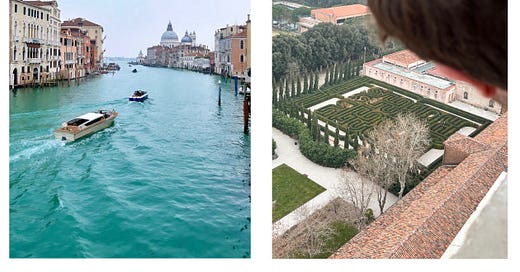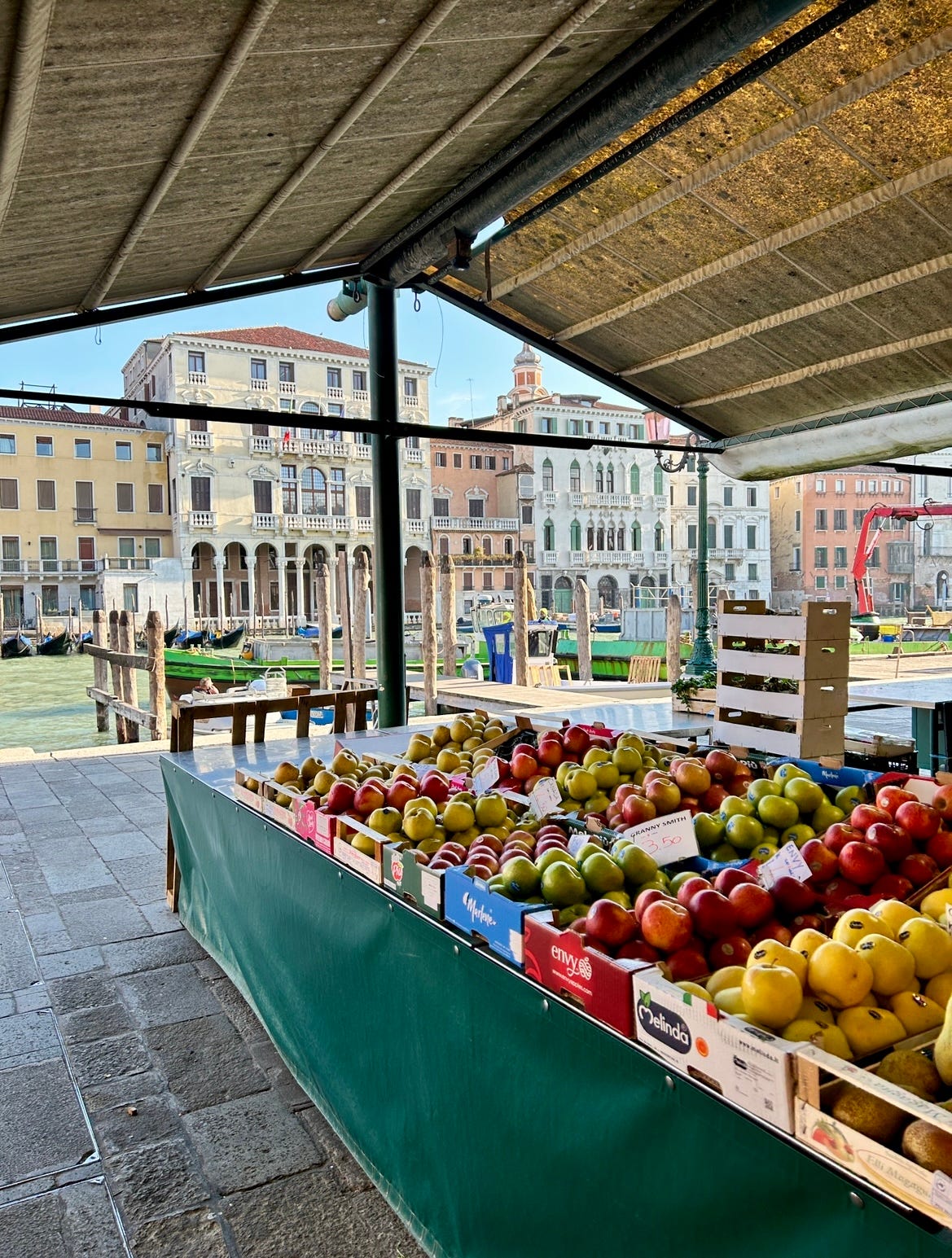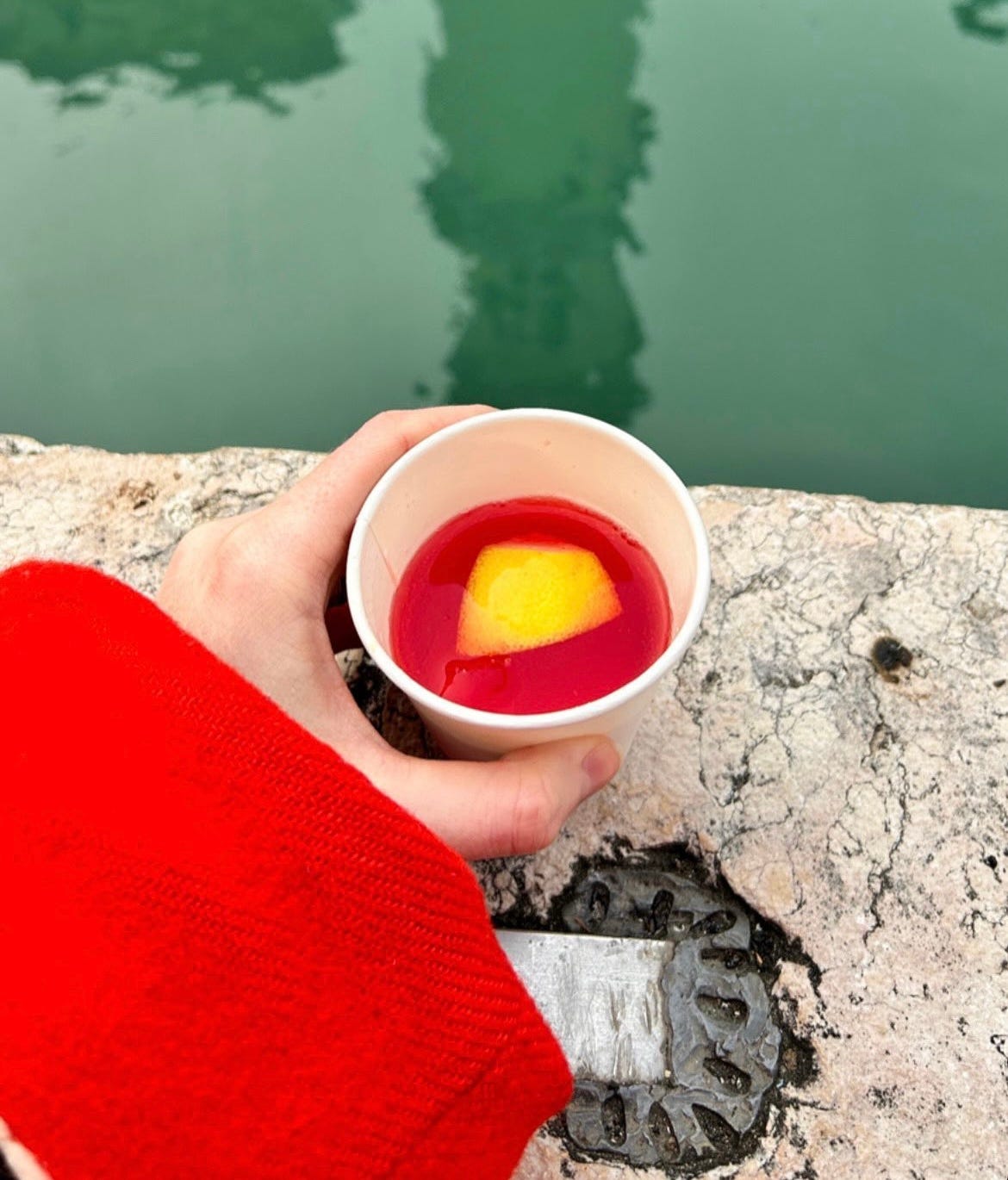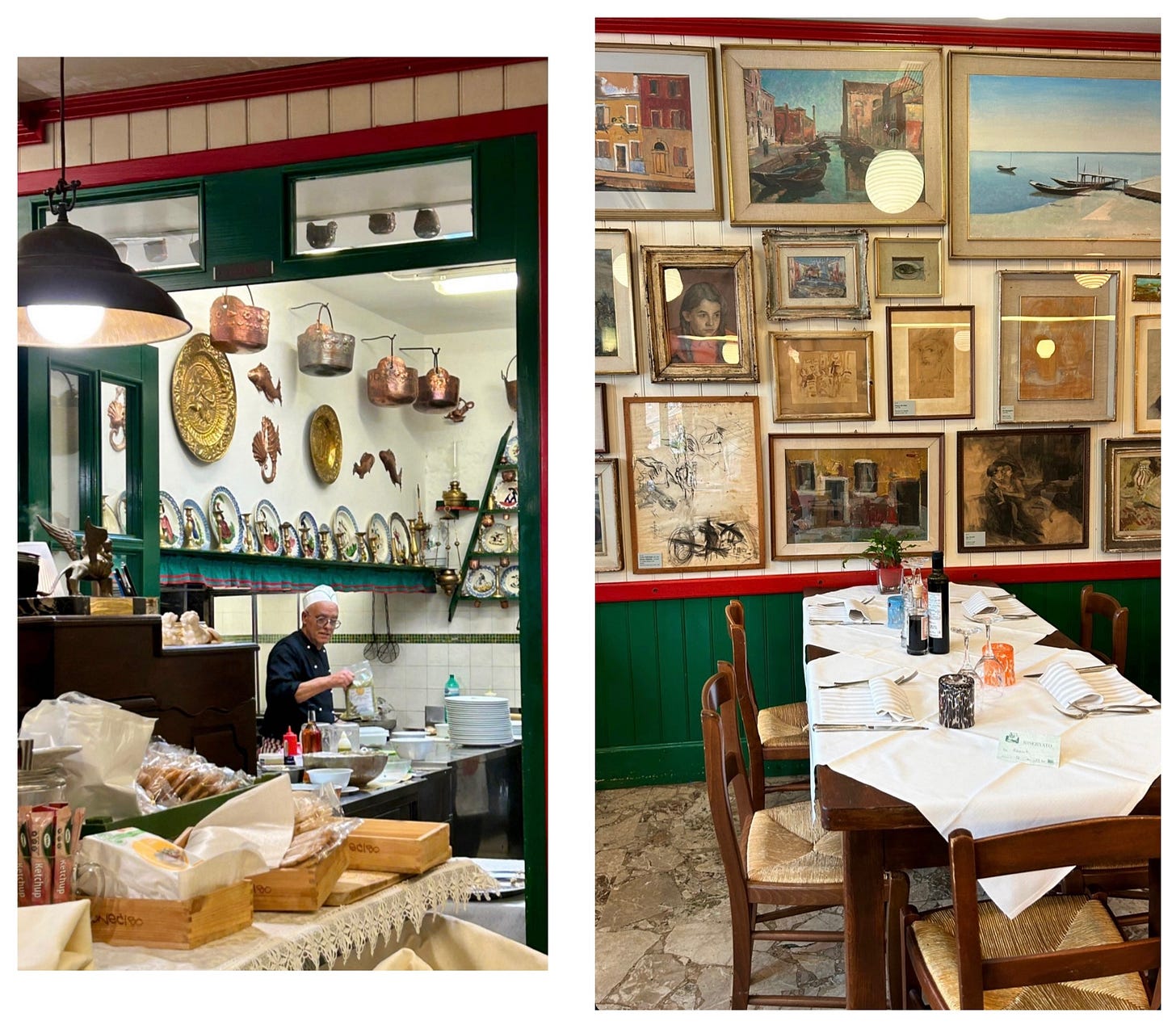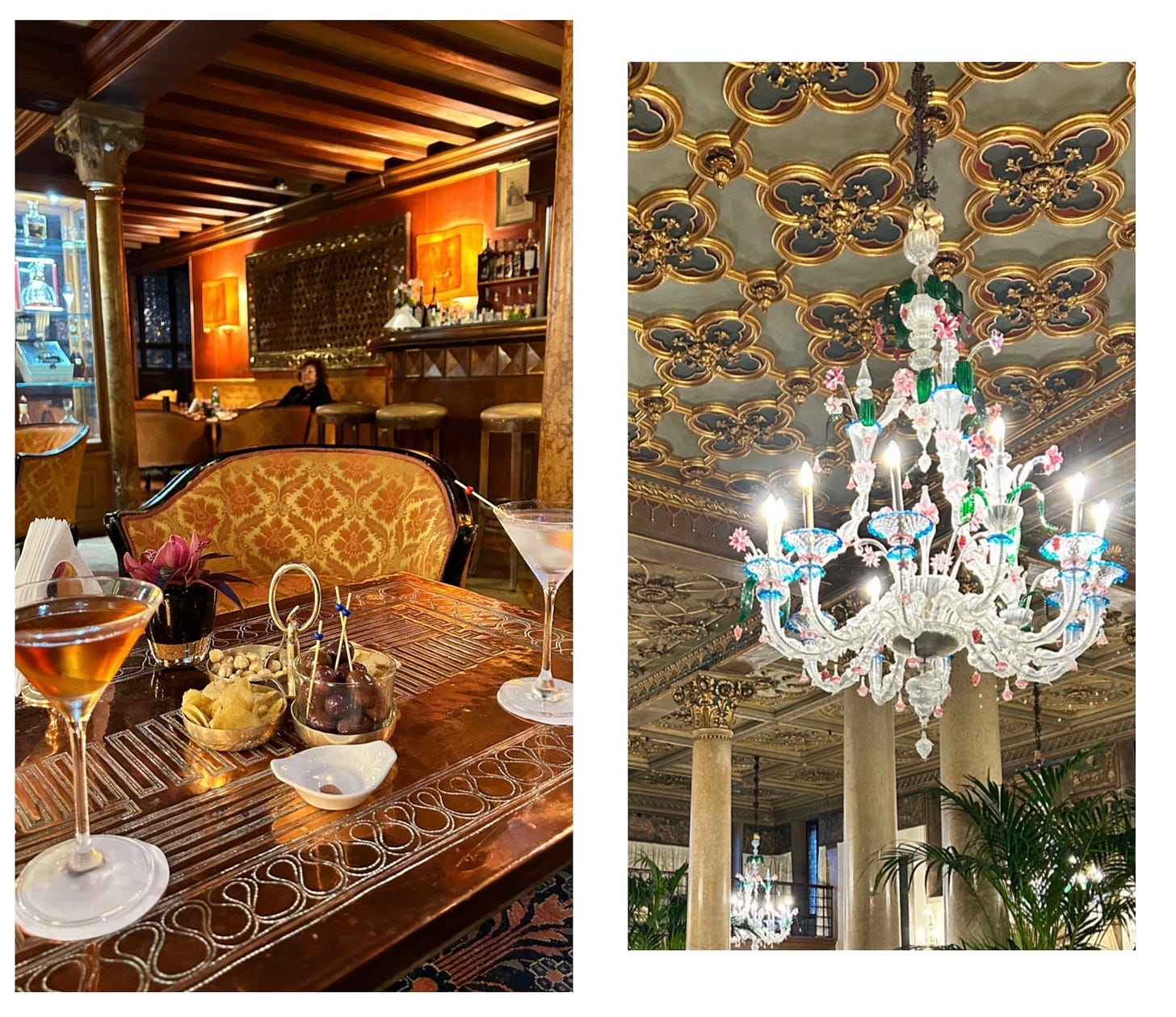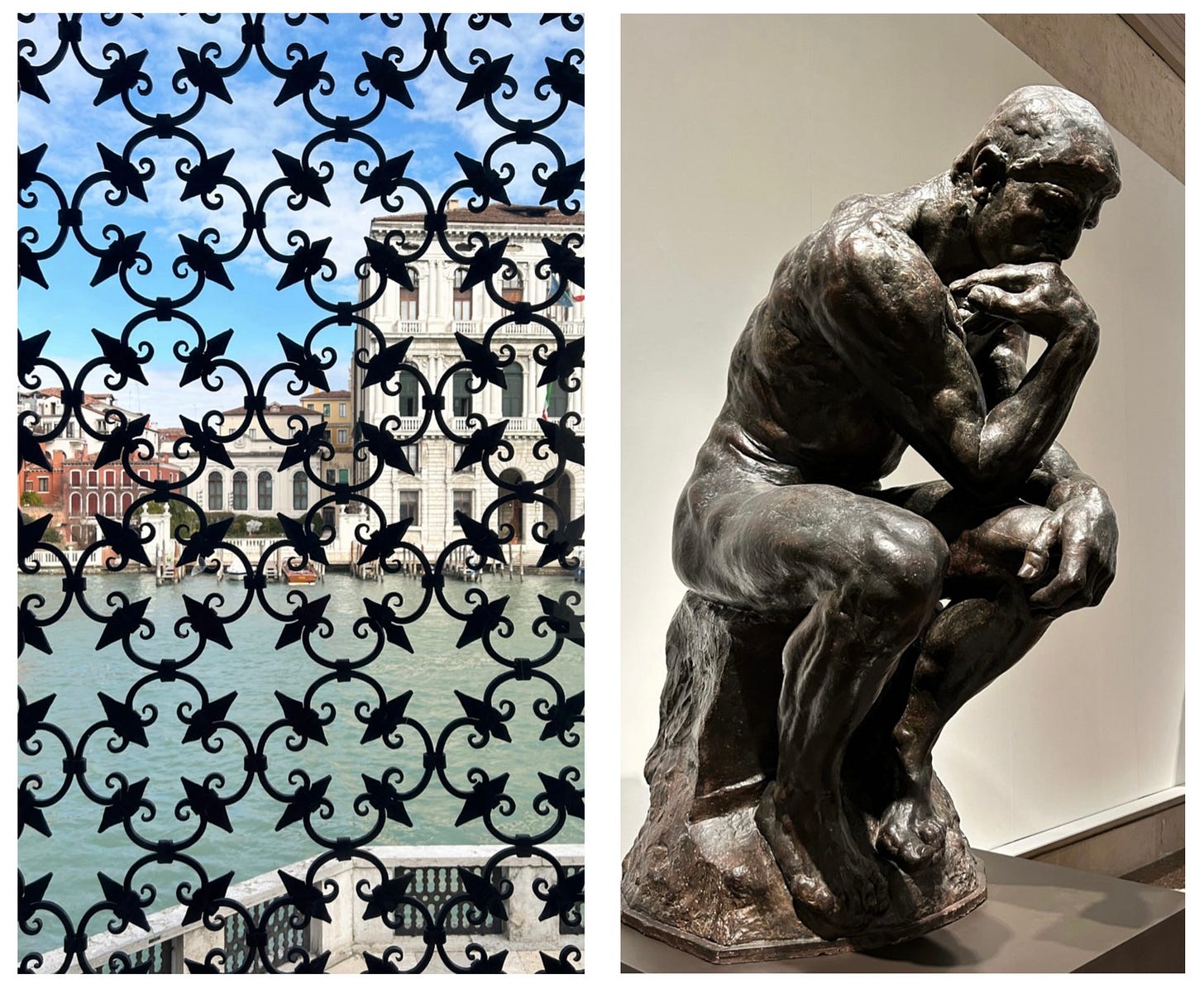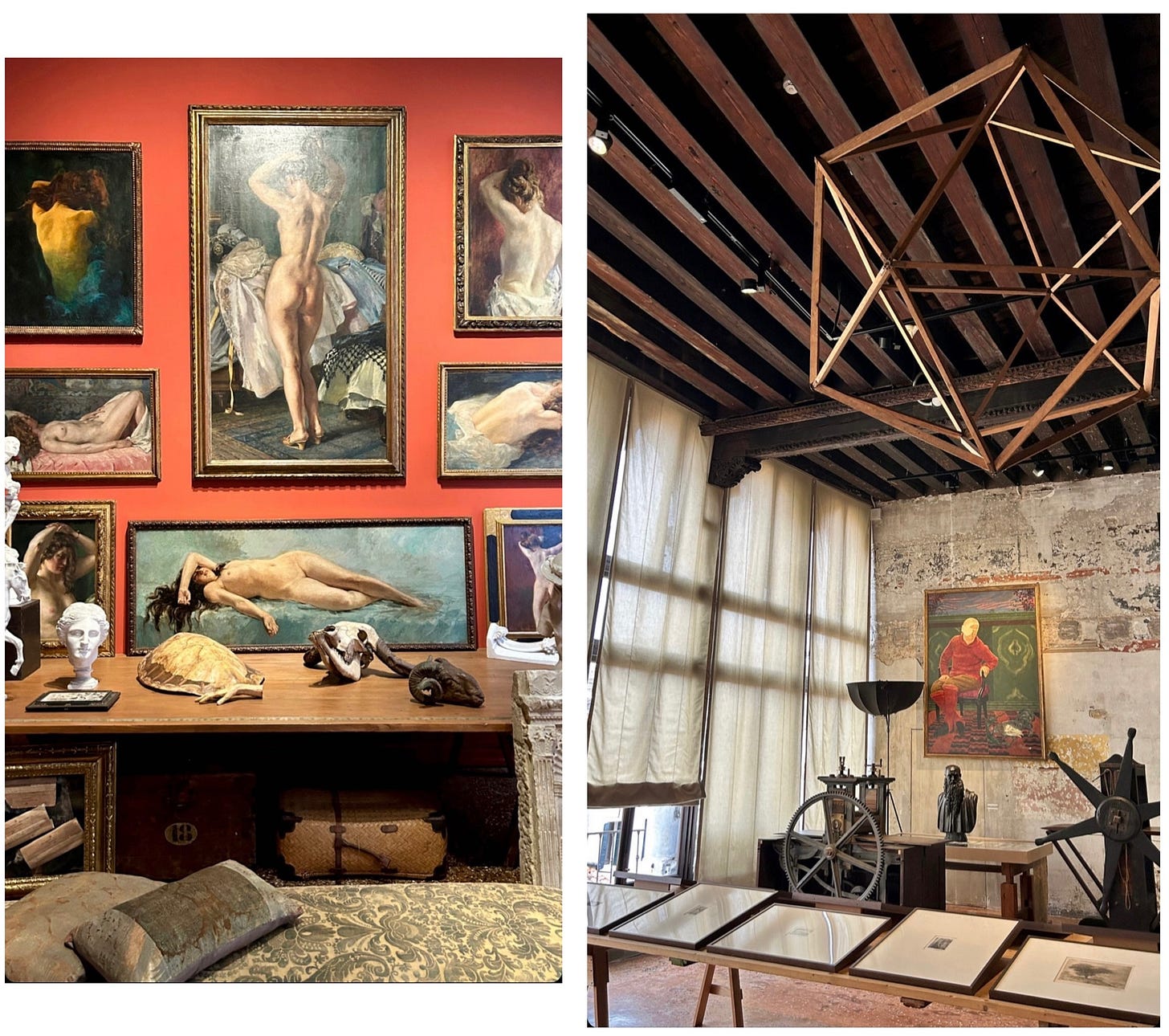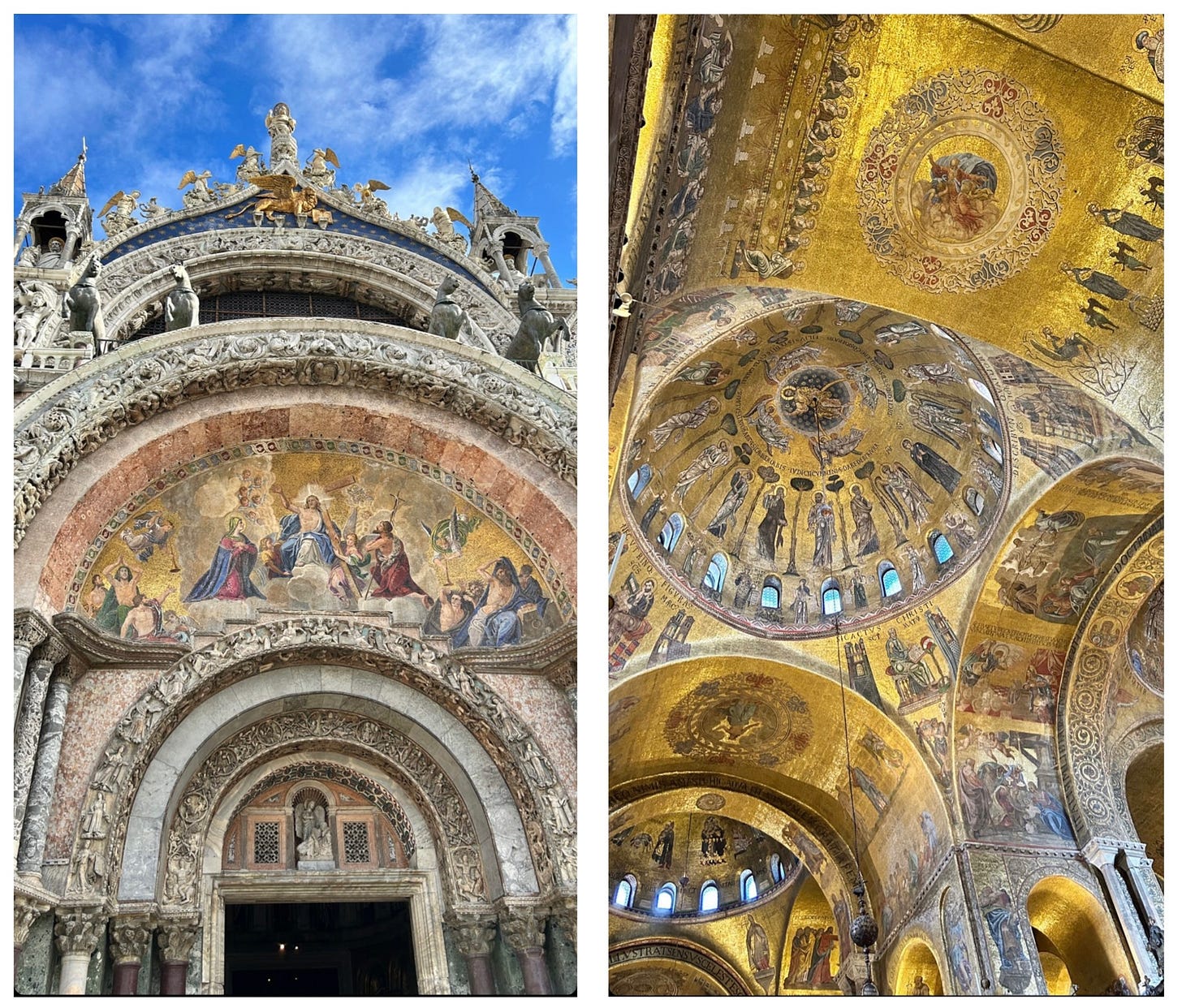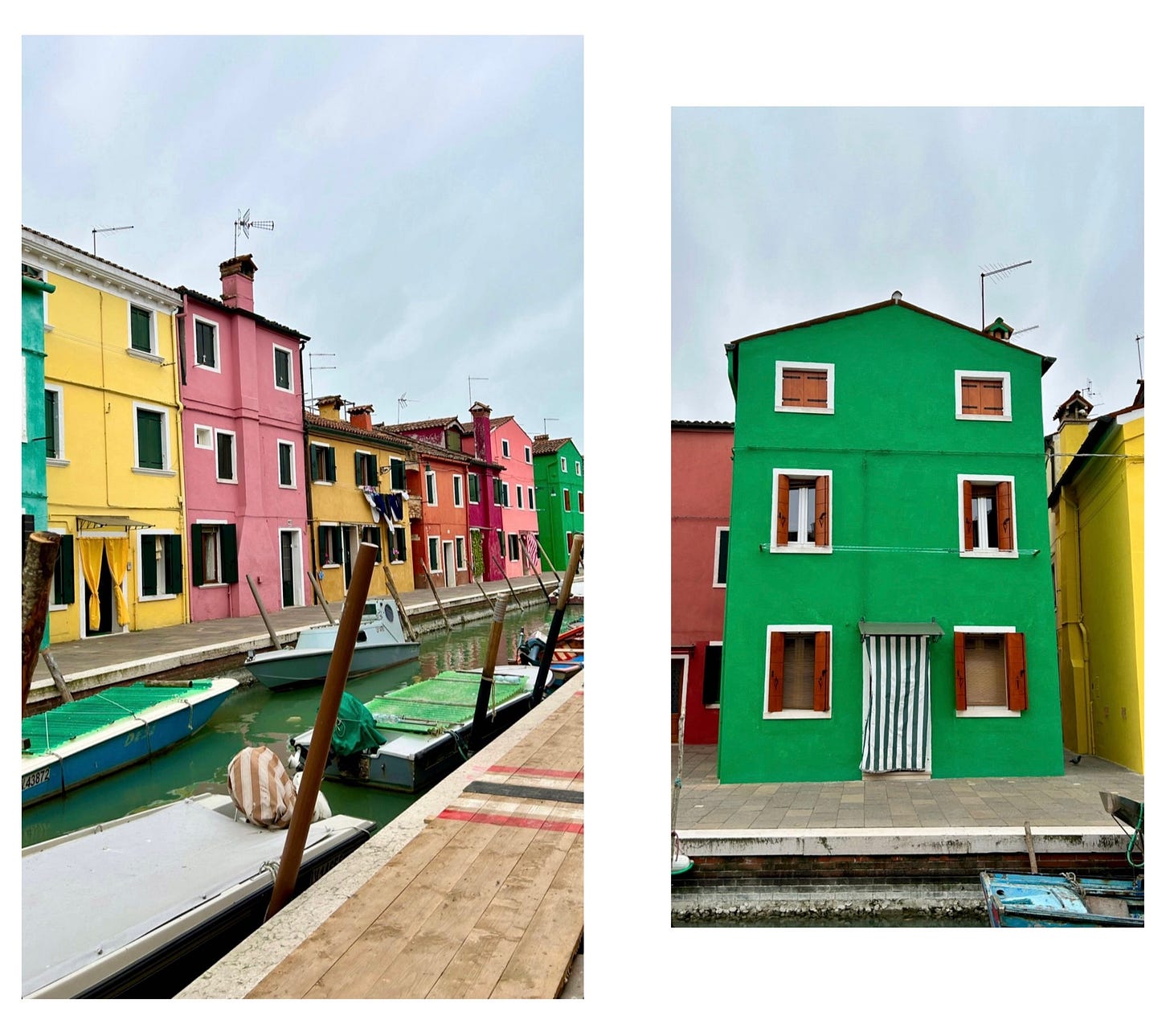In news that will likely surprise no one, Venice is an extremely beautiful place. Except it did surprise me: when I visited at the end of February, I walked around the city with my jaw almost perpetually dropped at the sheer magnificence of it. The fact that boats (‘Vaporettos’ / water buses) are the main mode of transport only added to the glamour of it all. As we sped up the Grand Canal in total awe of the palazzos that line its banks, the dome of Santa Maria della Salute in sight, and the wind both metaphorically and literally on our backs, we joked: imagine if this was how you got to work? Imagine if a Vaporetto was your equivalent to the tube? Surely you could never be unhappy if you started your day like this!
On our penultimate day, we boarded a Vaporetto to see a woman on the phone sobbing. She was in her twenties and, although I don’t speak Italian, crying the way you might if you’ve just had a bad fight with a boyfriend or a best friend. I was mesmerised by her: she looked so out of place in her surroundings that she was almost unreal. You forget when you’re on holiday, in your bubble of temporary unemployment, gluttonous eating and reckless spending, that this place is someone else’s home. Just as I was surprised by the beauty of Venice, I was taken aback again by this reminder that heartache, loneliness, despair - they still exist even in the most romantic of cities. Of course they do. Even on my saddest days, there are people all over London staring up at Big Ben in amazement, taking gleeful selfies on Portobello Road or maybe even thinking: can you imagine if you got to take a bright red, double decker bus to work? I’ve been trying to see London that way - through new, more appreciative, eyes - ever since.
Venice had actually never been top of my list of places to go - the hordes of tourists put me off. But aside from St Mark’s Square and the Rialto Bridge, it felt like we had the city to ourselves. There were stretches of time spent wandering deserted, winding streets over endless, tiny bridges where we didn’t meet a single soul. You might not get blazing sunshine in February, but I’d happily bundle myself up in layers to experience the almost sacred levels of serenity we found that week.
One of the first things we did was make our way to the church San Giorgio Maggiore, located on an island of the same name. From the top of the campanile (bell tower), the most incredible view unfolds before you - all of Venice and even further: Giudecca, the Lido, the island of the Armenians and more. Seeing it all stretched out in front of you makes for a really special starting place - like laying a vast map out on a table just as big, the night before an expedition. Hang around for the bells - they chime every 15 minutes and there’s something inexplicably life-affirming in feeling the sound waves reverberate through your bones. We left feeling giddy, and it wasn’t the Aperols we’d had en route.
Party city Venice is not: there’s little to no action post-midnight. This didn’t matter to me - mornings are my favourite time of day anywhere (read my inaugural post for more on why) but they felt extra special in Venice. Perhaps it was the time of year - the morning mist rising slowly like dry ice, revealing the city like Matthew Kelly had just introduced it as a guest on Stars On Their Eyes. Heading to the bustling Mercato di Rialto (a fish, fruit and vegetable market by the famous bridge) bright and early with a coffee and pastry in hand was one of my favourite things we did.
Here are some of my other highlights…
EATING & DRINKING
When in Rome Venice, do as the Venetians do. Prosecco is local to the Veneto region and far superior (and cheaper) to the sweet fizz we’re used to here - especially the ‘col fondo’ style. The literal translation is ‘with bottom’ (snigger), meaning a more natural, unfiltered, and slightly funkier result with some residual sediment. Spritzes are drunk all year round here, I personally prefer Campari over Aperol, and Cynar is commonplace too. You might also hear people order an ‘un’ombra’ of wine. ‘Ombre’ translates to ‘shadows’ (as opposed to ‘una bicchiere’ / a glass) and will get you a tiny glass of local wine for a couple of euros.
The Venetian equivalent of tapas or pintxos are called cicchetti - divinely salty and frequently stodgy bites to nibble on while you sip endless spritzes. My Dad once told me that when he was younger, pubs used to put a bowl of free roast potatoes out on the bar for punters to snack on. Despite it clearly being a ploy to stop customers getting too drunk and brawling, and the unignorable question of hygiene, I was quite charmed by the idea. Cicchetti serve essentially the same purpose, in a vastly more dignified manner. Every aperitivo tastes better with a salty accompaniment - although you can, and should, make a full meal out of them too.
The best we ate were at All’Arco. It’s on every list, for good reason, but that means it gets busy. It opens at 10am, so go have Prosecco for breakfast - you’re on holiday! Their tuna tartare bruschetta reminded me a little of the life-altering tuna tostadas at Mexico City’s Contramar. It’s opposite Cantina Do Mori - Venice’s oldest wine bar. Founded in 1462, rumour has it that Casanova brought his first dates here! Nearby Ai Rusteghi is also meant to be brilliant, sadly I hadn’t yet learnt to pace myself (spoiler: I never did).
I would happily spend a few hours just going back and forth between Cantina Già Schiavi & Osteria Al Squero & - two canalside wine bars less than two minutes walk from each other. The former is a bit of an institution: a family-run bacaro and bottle shop with wood panelled walls lined with wine bottles. Al Squero (a Venetian word for boatyard - the bar overlooks one, so you can watch gondolas being repaired while you eat & drink) draws a younger, rowdier crowd. At Cantina, the smoked swordfish and salt cod were my favourite cicchetti, and I’ve been dreaming of Al Squero’s pillows of fried, anchovy studded, mozzarella ever since. A *crucial* note for both places: if you’re eating outside, keep your plate of food covered with a napkin. We saw more than one person lose their entire meal to swooping seagulls.
My favourite place to drink (we went three times in three days) was Vino Vero - Venice’s first natural wine bar. Really good value, exciting wines by the glass (and bottle - we considered checking a bag several times) and interesting, less traditional cicchetti.
For fancier fare, I loved Antiche Carampane (best fritto misto I’ve had), Trattoria da Romano on the island of Burano (order the Anthony Bourdain-approved fish risotto) and Ristorante da Ivo (kitsch in the best way and supposedly George Clooney’s favourite). Top of my list for the next trip are Al Covo (Nigella Lawson is a fan) and Osteria Alle Testiere (if we’re ever able to get a booking). All restaurants require reservations, often made well in advance.
Harry’s Bar has never appealed to me much, especially when the city has so many other places that tick the overpriced cocktail box. I had a perfect Manhattan (which, for me, is literally perfect - equal parts sweet and dry vermouth) in the beautiful bar at Hotel Danieli, and Bar Gabbiano is almost as famous as the hotel that houses it. We didn’t make it to Il Mercante (too busy guzzling natural wines at Vino Vero) but if cocktails are your poison préféré, it sounds like the place to go.
SEEING
The Guggenheim is unmissable and immediately entered my top 5 favourite museums; Accademia is the national gallery of Venetian art; Ca’ Pesaro has some pretty breathtaking works by Rodin but wouldn’t be top of my list if you’re tight on time; and sadly Ca’ Rezzonico was closed for refurbishment while we were there. If you’re heading to Venice soon, there’s currently a great Lee Miller and Man Ray exhibition that I’d highly recommend. Everyone encouraged me to go to the Fortuny Museum - set in an amazing Gothic palazzo that was once home to Mariano Fortuny: an artist, stage and textile designer behind Fortuny Fabrics - but it didn’t blow me away. I might have had culture fatigue at this stage (it’s a thing!) so, if you like textiles, don’t take my word for it.
Yes, the swarms of people in Saint Mark’s Square are terrifying but the Basilica is absolutely worth braving the crowds. Queue jump passes are surprisingly inexpensive and highly recommended unless you want to spend hours waiting in line. Once you're inside, all the other people will disappear and all you’ll be able to see are the staggeringly beautiful, golden mosaics. We didn’t make it to Doge’s Palace - the Venetian houses of parliament right next door to the Basilica - and I’ve been kicking myself ever since.
VISITING
One of the other things I learnt on this trip (my naivety seems to be a running theme of this edition) was how many islands there are in the Venetian lagoon - over 100! The most popular are Murano (home to the iconic glass), Burano (famous for lace) and Torcello. Torcello, my favourite of the three, is where Venice was first founded before settlers moved on because of malaria, going on to found the city we know today. Compared to the other two, which felt a little like visiting Legoland, it was almost eerily quiet - as if the ancient settlers had only recently upped sticks. The cathedral is the oldest in Venice (639 AD) and absolutely exquisite, with the most extraordinary examples of Byzantine mosaics.
If you’re planning to see all three islands in a day, I’d start at Murano before going to Torcello for lunch (book Locanda Cipriani) and then Burano on the way home.
If you don’t fancy the 50 minute boat trip to Murano or Burano, the island of Giudecca is much closer and, along with the famous Hotel Cipriani, home to some culinary gems. I’ve heard great things about Trattoria Altanella, Trattoria ai Cacciatori and La Palanca.


